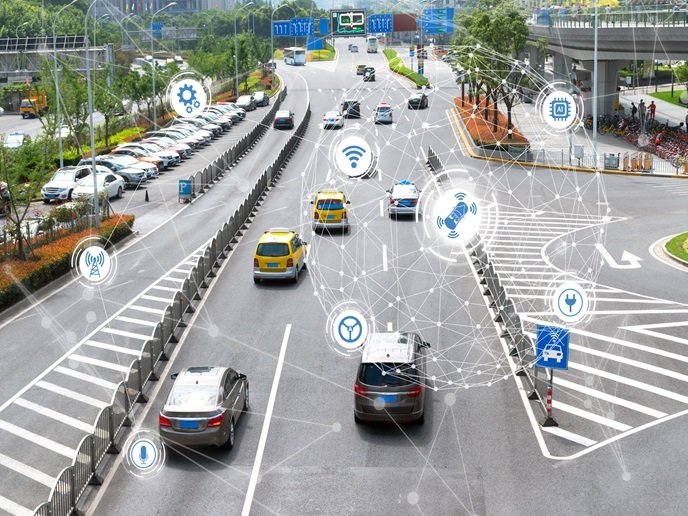Automated mobility starts with physical and digital infrastructure
Hear the term ‘smart mobility’ and the first thing that springs to mind is probably an autonomous vehicle, not the road it runs on. But when it comes to connected, cooperative and automated mobility (CCAM), you can’t have one without the other. “Autonomous driving doesn’t happen with a snap of the fingers, it requires a complex infrastructure comprised of both physical and digital technologies,” says Angelos Amditis, R&D director from the Institute of Communication and Computer Systems at the National Technical University of Athens in Greece. The PoDIUM project is helping to deliver such infrastructure. “With a focus on multi-connectivity and hybrid data management, PoDIUM aims to unlock real-world connectivity and cooperation solutions that will enable higher levels of CCAM,” explains Amditis, who serves as the project coordinator.
Prerequisite conditions
Although still a work in progress, the project has already delivered a blueprint for future CCAM systems while also developing several new automated mobility services. One early achievement was the specification of a high-level platform architecture that provides a robust framework for CCAM services. During its first year, the project also delivered a comprehensive CCAM market analysis that details key actors, roles, relationships and revenue streams. “These early successes are testament to the excellent collaboration among all project partners, which allowed us to make significant progress and deliver impactful results,” adds Amditis. Among those results is a real-time, reconfigurable, multi-connectivity solution that can be used to optimise available short-range and cellular communication channels. This innovation ensures that the physical and digital infrastructure provides the necessary level of reliability, availability and redundancy. The project also developed a hybrid data management architecture that can fuse data coming from multiple sources, including vehicles and road infrastructure. “Having ready access to such data allows us to create advanced environment perception models and digital twins, both of which enable interoperability between vehicles and are prerequisites to autonomous operations,” notes Amditis.
Navigating roadblocks
With these technologies in hand, the project next looked to test them in real-world environments. They soon discovered that doing so was easier said than done. “Due to the relatively immature EU legislation on autonomous mobility, the project encountered obstacles related to obtaining permission from authorities for automated vehicle and road tests,” remarks Amditis. The project was unable to secure the necessary permits from the local road authority for cross-border trials between Spain and France. So, instead, they split the related use case into two scenarios, one simulating the telecommunication cross-border conditions on a highway near Barcelona, the other demonstrating the benefits of its mobility as a service app at the border areas of La Jonquera in Spain and Le Boulou in France. The project is currently conducting high-value use cases in urban and highway environments in Germany, Spain and Italy.
Safe and seamless transport
As the project enters its final year, it looks to further refine and expand its tools, with a focus on integrating them into real-world applications. They also plan to explore opportunities for collaborating with industry partners to test and scale the PoDIUM platform. “These final efforts not only advance the tools we need to achieve safer, more seamless automated transportation systems, they also contribute to building public trust in autonomous mobility,” concludes Amditis.
Keywords
PoDIUM, automated mobility, infrastructure, digital infrastructure, smart mobility, autonomous driving, connected, cooperative and automated mobility, CCAM, automated mobility services, digital twins







